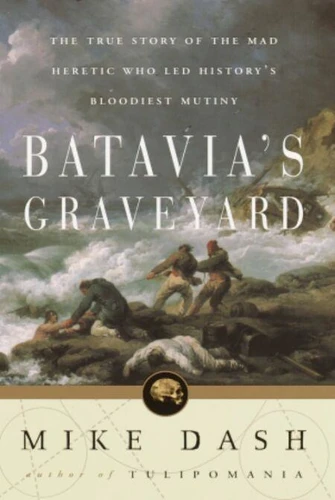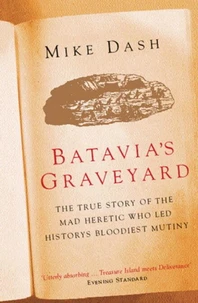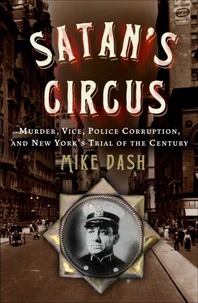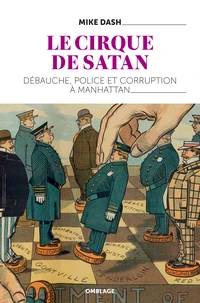Batavia's Graveyard. The True Story of the Mad Heretic Who Led History's Bloodiest Meeting
Par :Formats :
Disponible dans votre compte client Decitre ou Furet du Nord dès validation de votre commande. Le format ePub protégé est :
- Compatible avec une lecture sur My Vivlio (smartphone, tablette, ordinateur)
- Compatible avec une lecture sur liseuses Vivlio
- Pour les liseuses autres que Vivlio, vous devez utiliser le logiciel Adobe Digital Edition. Non compatible avec la lecture sur les liseuses Kindle, Remarkable et Sony
- Non compatible avec un achat hors France métropolitaine
 , qui est-ce ?
, qui est-ce ?Notre partenaire de plateforme de lecture numérique où vous retrouverez l'ensemble de vos ebooks gratuitement
Pour en savoir plus sur nos ebooks, consultez notre aide en ligne ici
- Nombre de pages400
- FormatePub
- ISBN1-4000-4510-X
- EAN9781400045105
- Date de parution05/03/2002
- Protection num.Adobe DRM
- Taille907 Ko
- Infos supplémentairesepub
- ÉditeurCrown
Résumé
From the bestselling author of Tulipomania comes Batavia's Graveyard, the spellbinding true story of mutiny, shipwreck, murder, and survival. It was the autumn of 1628, and the Batavia, the Dutch East India Company's flagship, was loaded with a king's ransom in gold, silver, and gems for her maiden voyage to Java. The Batavia was the pride of the Company's fleet, a tangible symbol of the world's richest and most powerful commercial monopoly.
She set sail with great fanfare, but the Batavia and her gold would never reach Java, for the Company had also sent along a new employee, Jeronimus Corneliszoon, a bankrupt and disgraced man who possessed disarming charisma and dangerously heretical ideas. With the help of a few disgruntled sailors, Jeronimus soon sparked a mutiny that seemed certain to succeed-but for one unplanned event: In the dark morning hours of June 3, the Batavia smashed through a coral reef and ran aground on a small chain of islands near Australia.
The commander of the ship and the skipper evaded the mutineers by escaping in a tiny lifeboat and setting a course for Java-some 1, 800 miles north-to summon help. Nearly all of the passengers survived the wreck and found themselves trapped on a bleak coral island without water, food, or shelter. Leaderless, unarmed, and unaware of Jeronimus's treachery, they were at the mercy of the mutineers. Jeronimus took control almost immediately, preaching his own twisted version of heresy he'd learned in Holland's secret Anabaptist societies.
More than 100 people died at his command in the months that followed. Before long, an all-out war erupted between the mutineers and a small group of soldiers led by Wiebbe Hayes, the one man brave enough to challenge Jeronimus's band of butchers. Unluckily for the mutineers, the Batavia's commander had raised the alarm in Java, and at the height of the violence the Company's gunboats sailed over the horizon.
Jeronimus and his mutineers would meet an end almost as gruesome as that of the innocents whose blood had run on the small island they called Batavia's Graveyard. Impeccably researched and beautifully written, Batavia's Graveyard is the next classic of narrative nonfiction, the book that secures Mike Dash's place as one of the finest writers of the genre.
She set sail with great fanfare, but the Batavia and her gold would never reach Java, for the Company had also sent along a new employee, Jeronimus Corneliszoon, a bankrupt and disgraced man who possessed disarming charisma and dangerously heretical ideas. With the help of a few disgruntled sailors, Jeronimus soon sparked a mutiny that seemed certain to succeed-but for one unplanned event: In the dark morning hours of June 3, the Batavia smashed through a coral reef and ran aground on a small chain of islands near Australia.
The commander of the ship and the skipper evaded the mutineers by escaping in a tiny lifeboat and setting a course for Java-some 1, 800 miles north-to summon help. Nearly all of the passengers survived the wreck and found themselves trapped on a bleak coral island without water, food, or shelter. Leaderless, unarmed, and unaware of Jeronimus's treachery, they were at the mercy of the mutineers. Jeronimus took control almost immediately, preaching his own twisted version of heresy he'd learned in Holland's secret Anabaptist societies.
More than 100 people died at his command in the months that followed. Before long, an all-out war erupted between the mutineers and a small group of soldiers led by Wiebbe Hayes, the one man brave enough to challenge Jeronimus's band of butchers. Unluckily for the mutineers, the Batavia's commander had raised the alarm in Java, and at the height of the violence the Company's gunboats sailed over the horizon.
Jeronimus and his mutineers would meet an end almost as gruesome as that of the innocents whose blood had run on the small island they called Batavia's Graveyard. Impeccably researched and beautifully written, Batavia's Graveyard is the next classic of narrative nonfiction, the book that secures Mike Dash's place as one of the finest writers of the genre.
From the bestselling author of Tulipomania comes Batavia's Graveyard, the spellbinding true story of mutiny, shipwreck, murder, and survival. It was the autumn of 1628, and the Batavia, the Dutch East India Company's flagship, was loaded with a king's ransom in gold, silver, and gems for her maiden voyage to Java. The Batavia was the pride of the Company's fleet, a tangible symbol of the world's richest and most powerful commercial monopoly.
She set sail with great fanfare, but the Batavia and her gold would never reach Java, for the Company had also sent along a new employee, Jeronimus Corneliszoon, a bankrupt and disgraced man who possessed disarming charisma and dangerously heretical ideas. With the help of a few disgruntled sailors, Jeronimus soon sparked a mutiny that seemed certain to succeed-but for one unplanned event: In the dark morning hours of June 3, the Batavia smashed through a coral reef and ran aground on a small chain of islands near Australia.
The commander of the ship and the skipper evaded the mutineers by escaping in a tiny lifeboat and setting a course for Java-some 1, 800 miles north-to summon help. Nearly all of the passengers survived the wreck and found themselves trapped on a bleak coral island without water, food, or shelter. Leaderless, unarmed, and unaware of Jeronimus's treachery, they were at the mercy of the mutineers. Jeronimus took control almost immediately, preaching his own twisted version of heresy he'd learned in Holland's secret Anabaptist societies.
More than 100 people died at his command in the months that followed. Before long, an all-out war erupted between the mutineers and a small group of soldiers led by Wiebbe Hayes, the one man brave enough to challenge Jeronimus's band of butchers. Unluckily for the mutineers, the Batavia's commander had raised the alarm in Java, and at the height of the violence the Company's gunboats sailed over the horizon.
Jeronimus and his mutineers would meet an end almost as gruesome as that of the innocents whose blood had run on the small island they called Batavia's Graveyard. Impeccably researched and beautifully written, Batavia's Graveyard is the next classic of narrative nonfiction, the book that secures Mike Dash's place as one of the finest writers of the genre.
She set sail with great fanfare, but the Batavia and her gold would never reach Java, for the Company had also sent along a new employee, Jeronimus Corneliszoon, a bankrupt and disgraced man who possessed disarming charisma and dangerously heretical ideas. With the help of a few disgruntled sailors, Jeronimus soon sparked a mutiny that seemed certain to succeed-but for one unplanned event: In the dark morning hours of June 3, the Batavia smashed through a coral reef and ran aground on a small chain of islands near Australia.
The commander of the ship and the skipper evaded the mutineers by escaping in a tiny lifeboat and setting a course for Java-some 1, 800 miles north-to summon help. Nearly all of the passengers survived the wreck and found themselves trapped on a bleak coral island without water, food, or shelter. Leaderless, unarmed, and unaware of Jeronimus's treachery, they were at the mercy of the mutineers. Jeronimus took control almost immediately, preaching his own twisted version of heresy he'd learned in Holland's secret Anabaptist societies.
More than 100 people died at his command in the months that followed. Before long, an all-out war erupted between the mutineers and a small group of soldiers led by Wiebbe Hayes, the one man brave enough to challenge Jeronimus's band of butchers. Unluckily for the mutineers, the Batavia's commander had raised the alarm in Java, and at the height of the violence the Company's gunboats sailed over the horizon.
Jeronimus and his mutineers would meet an end almost as gruesome as that of the innocents whose blood had run on the small island they called Batavia's Graveyard. Impeccably researched and beautifully written, Batavia's Graveyard is the next classic of narrative nonfiction, the book that secures Mike Dash's place as one of the finest writers of the genre.














